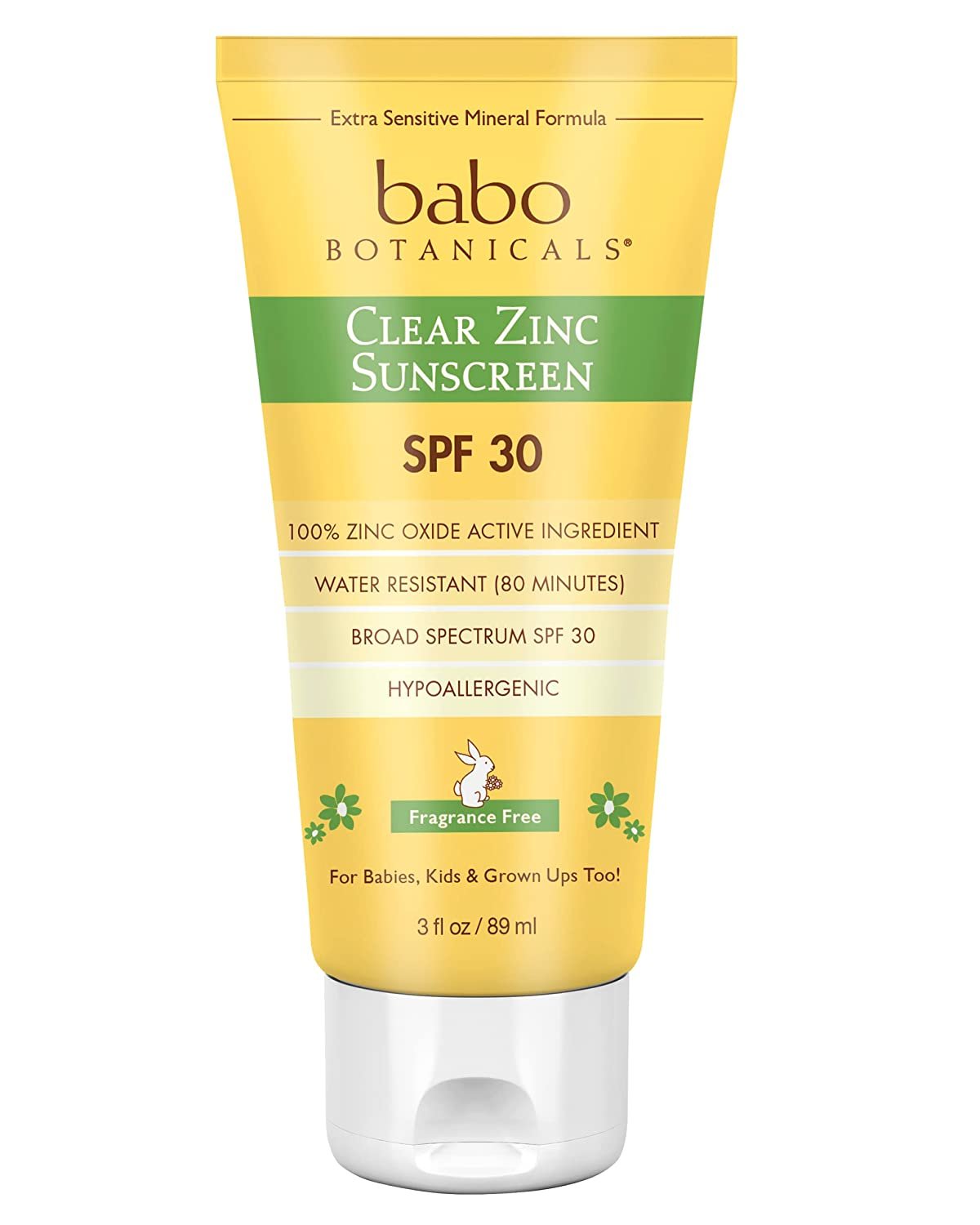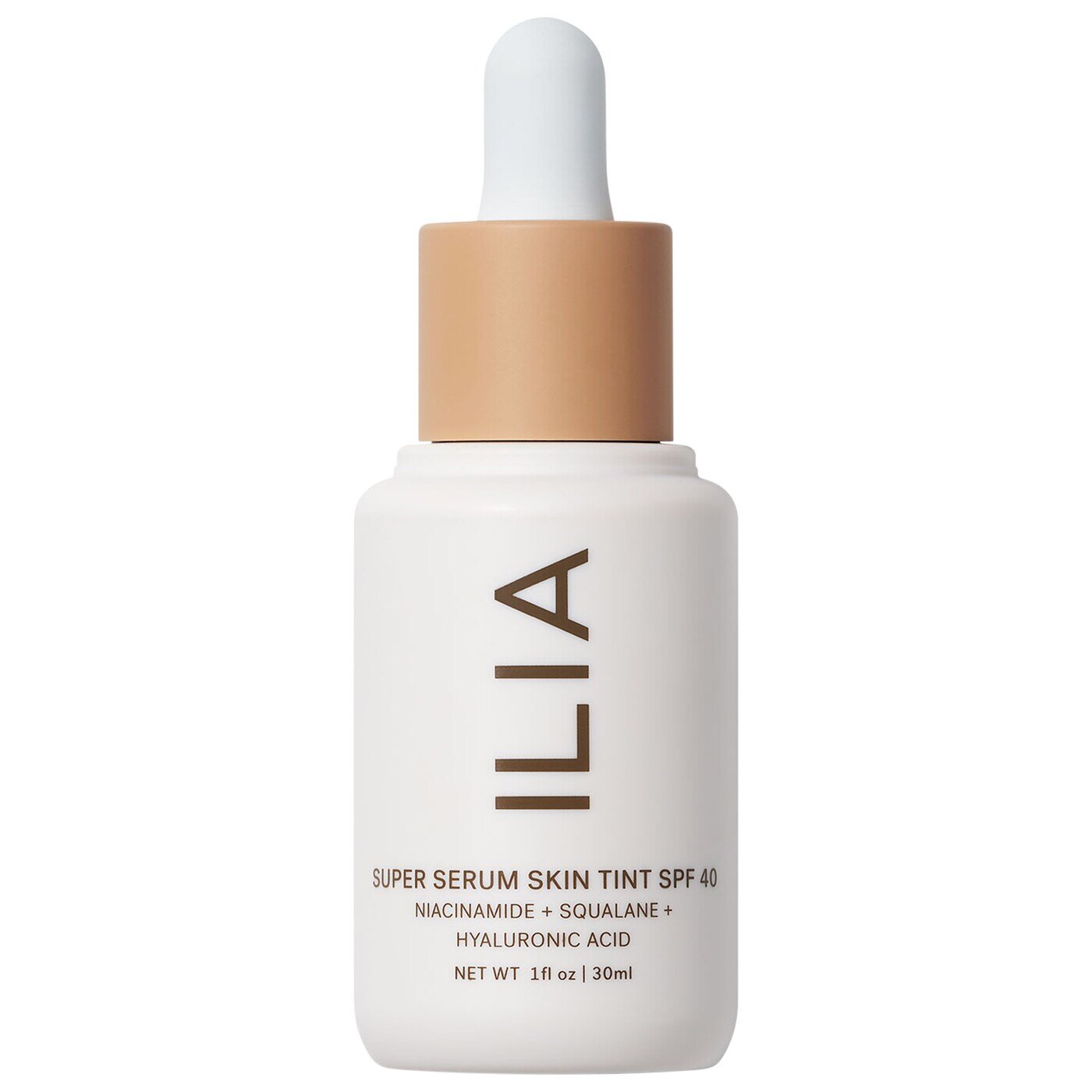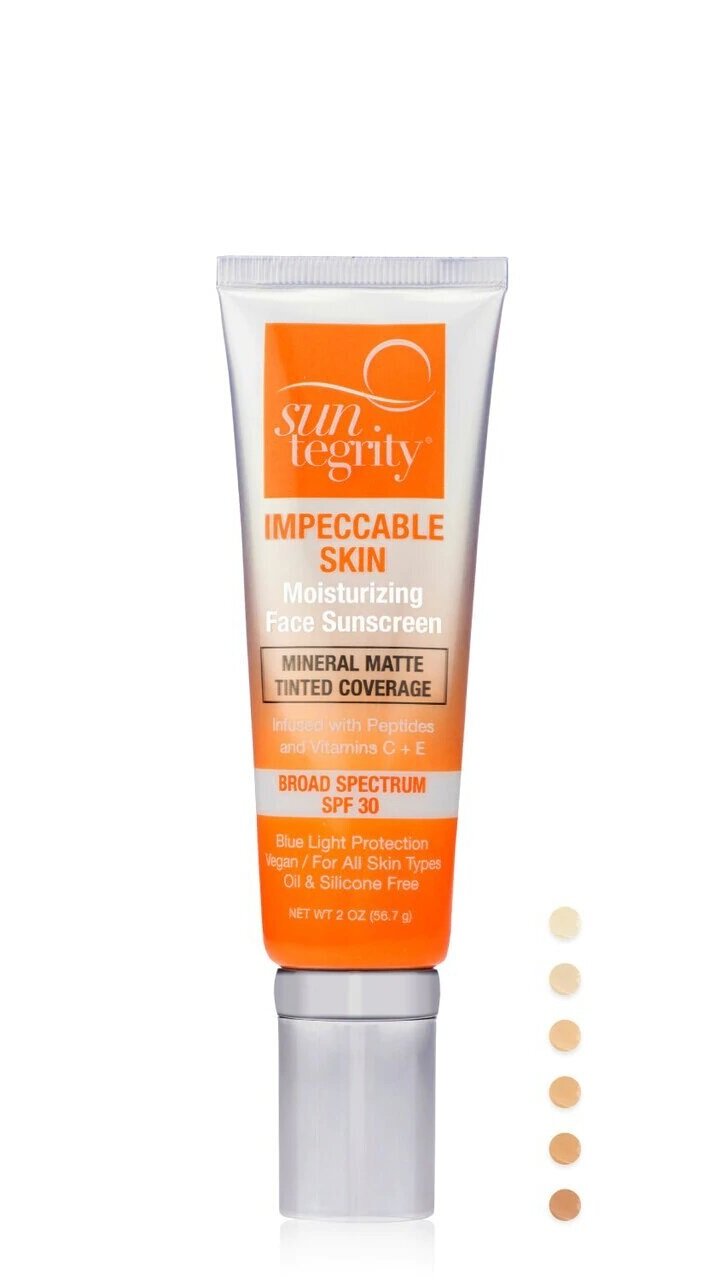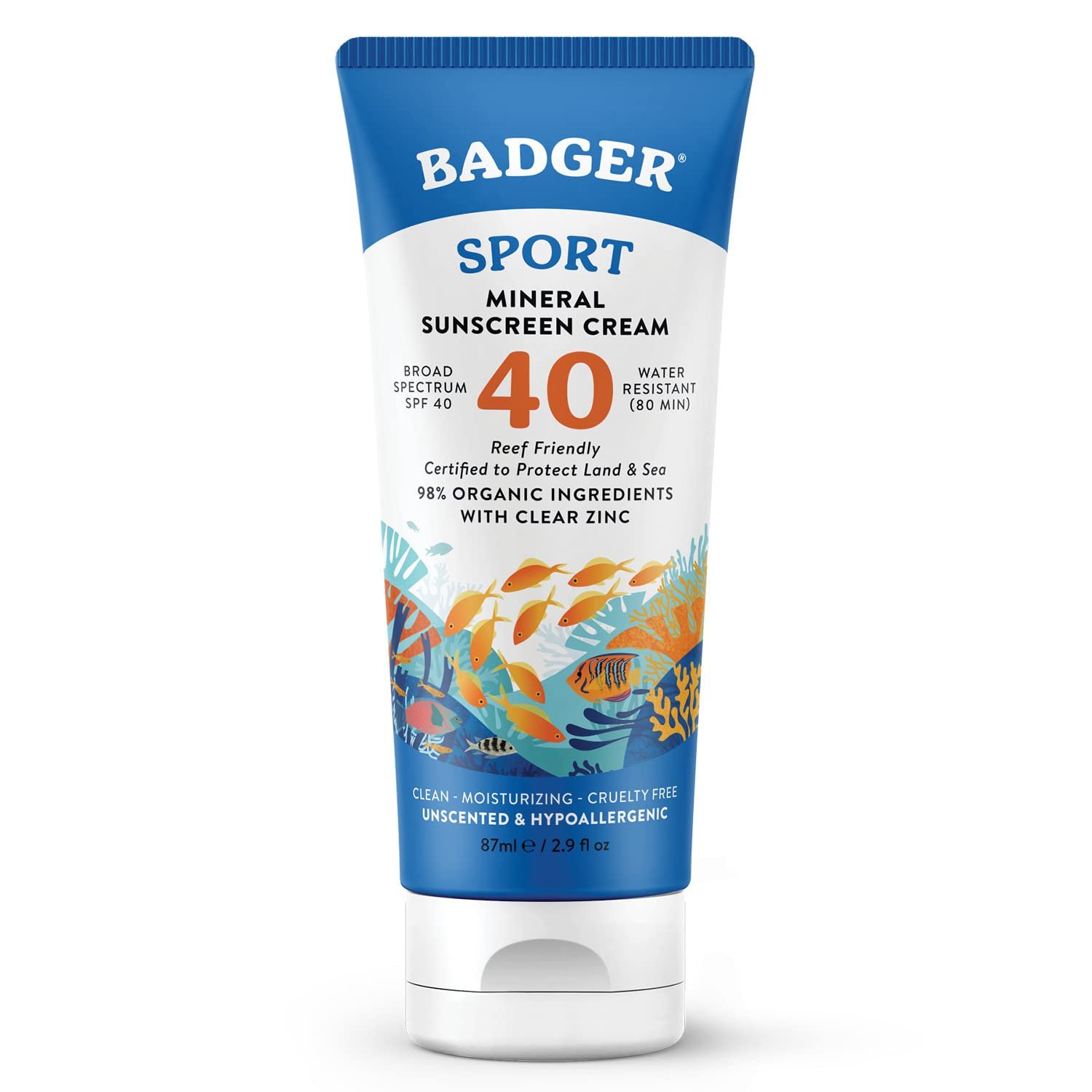Clean Sunscreen
*Originaly published January 18, 2021, updated since.
According to the CDC, skin cancer is the most common form of cancer in the United States. 1 in 3 Americans will develop skin cancer by age 70.
The results of a 2011 study indicated regular use of an SPF 15 or higher sunscreen reduces the risk of developing melanoma by 50 percent. Unfortunately, using sunscreens with toxins poses other health risks. Most options on the shelves contain these chemical UV filters which are endocrine disruptors plus toxic inactive ingredients, but there are clean effective options that perform well.
Here you’ll learn what to look for in a sunscreen, what ingredients to look out for plus some actually clean alternatives.
Physical Sunscreen vs Chemical Sunscreen
Active sunscreen ingredients can be classified as chemical UV filters (AKA organic compounds) or physical UV filters (AKA inorganic compounds). For many years, chemical UV filters were deemed safe because they were not thought to be absorbed by the skin. In May 2019, the Journal of the American Medical Association published results from a study confirming the absorption of these ingredients in the skin. Sunscreen ingredients are detected in urine, breast milk, and blood. In addition, some chemical sunscreens are penetration enhancers, which means they enhance the absoption of other ingredients into the skin.
In contrast, physical UV filters (AKA inorganic filters) are not believed to be readily absorbed in the skin, particularly zinc oxide in non-nano form.
The FDA has proposed that there are only two active ingredients proven safe and effective for sunscreen use, titanium dioxide and zinc oxide. There are technically 16 approved active ingredients for sunscreens in the US which includes 14 chemical filters and the two physical filters, zinc oxide and titanium dioxide.
Chemical UV Filters (Organic Compounds)
Most sunscreens contain chemical filters because they go on clear and cost less. Chemical filters can negatively impact the body by disrupting the endocrine system, mimicking hormones, and causing skin allergies. Some studies indicate chemical UV filters may interfere with human sperm function.[3]
Commonly used chemical filters and associated health effects include the following:
Oxybenzone – causes endocrine disruption, and photoallergic reactions (immune system response when exposed to UV light). It absorbs through the skin in particularly large amounts. 97% of people tested have oxybenzone present in their urine and its also found in breastmilk.[6] In 2019, The FDA warned about oxybenzone for its ability to effect hormones and increase absorption in the skin. Oxybenzone exhibits breakdown when exposed to UV radiation. [7]
Octinoxate – UVB filter also known as Octyl methoxycinnamate (OMC) that is an endocrine disruptor. [8]
Homosalate –. found to increase estrogenic effects on Michigan Cancer Foundation-7 (MCF-7) human breast cancer cell lines. [9]
Avobenzone – produces many by-products in swimming pool water, some of which are known to be toxic (chlorinated phenols and acetophenones) and many others which the toxicity is unknown. [10] Avobenzone exhibits breakdown when exposed to UV radiation. [7]
Octocrylene – found to increase estrogenic effects on Michigan Cancer Foundation-7 (MCF-7) human breast cancer cell lines. Octocrylene is also associated with skin allergies, and one study found octocrylene to have neurotoxic effects. [9]
Organic Sunscreens Not Approved in the U.S.
You may come across active sunscreen ingredients that are not approved in the US and are made or sold in other countries. Newer organic sunscreens that are approved for use in the EU but not yet in the United States include the following:
Uvinul A Plus (Diethylamino hydroxybenzoyl hexyl benzoate)
Uvinul T 150 (ethylhexyl triazone)
Uvinul P25 (PEG 25 PABA)
Tinosorb M (Bisoctrizole or methylene bis-benzotriazolyl tetramethylbutylphenol)
Tinosorb S (bemotrizinol)
Tinosorb A2B (tris-biphenyl triazine)
Uvasorb HEB (Iscotrizinol or diethylhexyl butamido triazone)
Amiloxate (isoamyl p-methoxycinnamate)
Physical UV Filters (Inorganic Compounds)
Inorganic compounds like zinc oxide and titanium dioxide reflect and scatter UV radiation as opposed to organic compounds which absorb UV radiation. The latest FDA recommendation is that the only two ingredients determined to be safe and effective in sunscreen are the inorganic compounds, titanium dioxide and zinc oxide.
Advantages of physical UV filters are the absence of skin irritation and sensitization, inertness of the ingredients, limited skin penetration, and broad spectrum protection. [7]
Zinc oxide is preferred to titanium dioxide because it is more effective at blocking UVA rays and is FDA approved for use on babies (in diaper rash creams).
Nanoparticles in Sunscreen
It is possible that nano sized zinc oxide and titanium dioxide in sunscreens are absorbed by the skin, and nano particles can cross the blood-brain barrier. Because of this, non-nano zinc oxide is the safest option. In the European Union, sunscreens with nano-particles are restricted due to inhalation risks. Inhaling nanoparticles can inflame the lungs and lead to cancer.
Other Ingredients to Avoid in Sunscreen
There are two sections on the sunscreen ingredient label: active ingredients and inactive ingredients. Active ingredients are those responsible for UV protection. Inactive ingredients are all other ingredients that contribute to the look and feel of the formula as well as preserve it. Below are other inactive ingredients commonly found in sunscreen products that are potentially harmful and should be avoided:
Parabens - antimicrobial preservatives that are immune and skin toxicants, mimic estrogen and disrupt the endocrine system, are toxic to the developmental and reproductive systems, interfere with gene expression, and are associated with cancer. [14]
PEGs (polyethylene glycols) – thickening agents and humectants that help retain moisture and enhance penetration of ingredients. PEGs can be contaminated with 1,4-dioxane and ethylene oxide which are associated with reproductive, developmental, and endocrine effects, cancer, and DNA damage. [15]
Fragrance – mix of fragrance and chemicals associated with allergies, dermatitis, respiratory distress and potential effects on the reproductive system. Can contain unnamed toxic ingredients like phthalates which are associated with developmental and reproductive toxicity, endocrine disruption, and cancer. [16][17][18][9]
Propylene glycol - skin irritant associated with contact dermatitis.
Triethanolamine - irritating to eyes, skin, respiratory tract and can be contaminated with nitrosamines, which are carcinogenic. Not allowed for use in Canadian cosmetics. [20][21]
Petrolatum - derived from petroleum and may contain polycyclic aromatic hydrocarbons (PAHs) which are carcinogenic, when not fully refined. [22]
Propylene glycol - skin irritant associated with contact dermatitis. [23]
Phenoxyethanol- skin, eye, or lung irritant. In 2008, the FDA warned consumers not to use Mommy’s Bliss Nipple cream because it contained phenoxyethanol which was harmful to infants. The statement indicated phenoxyethanol could “depress the central nervous system and may cause vomiting and diarrhea, which can lead to dehydration in infants.” Phenoxyethanol remains a controversial ingredient and even “green” beauty products continue to use it as a preservative. [24]
Switch
Here are examples of sunscreens that contain ingredients to avoid.
Coppertone Ultraguard Sunsreen contains homosalate, fragrance, and triethanolamine.
Laura Mercier Tinted Moisturizer SPF contains octinoxate, parabens, and PEGs.
EltaMd UV Daily contains the chemical filter octinoxate, petrolatum, PEG, and phenoxyethanol.
Greenwashed Sunscreens
The following sunscreens are marketed as “clean” but contain potentially harmful ingredients:
Supergoop Unseen Sunscreen contains the chemical filters avobenzone, homosalate, octisalate, and octocrylene.
Supergoop Play sunscreen contains avobenzone, homosalate, octisalate and octocrylene.
Tula Mineral Magic sunscreen contains phenoxyethanol and polyethylene glycol.
Coola Sun Silk Face sunscreen drops contain avobenzone, fragrance, octisalate, and octocrylene.
Tatcha The Silk Mineral sunscreen contains phenoxyethanol and polyethylene glycol.
Drunk Elephant Umbra Tinte contains chlorphenesin, phenoxyethanol, and steareth.
Baby Bum mineral sunscreen contains phenoxyethanol.
Blue Lizard Sensitive sunscreen contains chlorophenesin, disodium EDTA, polyethylene gycol, and phenoxyethanol.
Alba Botanicals kids sunscreen contains avobenzone, homosalate, octisalate, octocrylene
Safe Sunscreen Options
Non-Nano Zinc Oxide
The first step in determining whether or not a sunscreen is safe is to check the active ingredients. The only active ingredient should be non-nano zinc oxide. If the only ingredient in the active section is non-nano zinc oxide, then you can move on to check the inactive section for potentially harmful ingredients.
Choose Sunscreen Based on Usage
Sunscreen is not a one for all type product that can be used for all areas of the body and for all activities. Multi-use products are amazing, but sunscreen is not one of them.
Here are some questions to consider before purchasing a sunscreen as each scenario may warrant a different product.
Is this for my face?
Am I wearing it under makeup?
Will I be getting my skin wet?
Will I be in direct sunlight or mostly indoors
Is this for a child?
Best Non-Toxic Sunscreen By Category
Face
Suntegrity Impeccable Skin is a matte foundation with SPF30.
Ilia Super Serum Skin Tint is a super glowy foundation with SPF40.
Body
Thinksport is a water-resistant sunscreen for the whole family with SPF50. Note that Thinksport Baby sunscreen now has natural fragrance and I would avoid this one.
Babo Botanicals sheer zinc sunscreen rubs in easy, is water resistant, and great for the family with SPF30.
Badger Sport has a SPF 40 and simple, clean ingredients.
Click the pictures below to purchase and learn more.
References & Resources
[1] https://www.cdc.gov/cancer/skin/statistics/index.htm
[3] https://www.ncbi.nlm.nih.gov/pmc/articles/PMC5744631/
[6] https://onlinelibrary.wiley.com/doi/abs/10.1111/jocd.12449
[7] https://www.sciencedirect.com/topics/pharmacology-toxicology-and-pharmaceutical-science/octocrylene
[8] https://www.sciencedirect.com/science/article/pii/S2214750017300288
[9] https://www.sciencedirect.com/topics/pharmacology-toxicology-and-pharmaceutical-science/homosalate
[10] https://www.sciencedirect.com/science/article/pii/S0160412019325656
[11] https://www.ncbi.nlm.nih.gov/pmc/articles/PMC3781714/
[13] https://ec.europa.eu/health/scientific_committees/opinions_layman/zinc-oxide/es/l-2/5.htm
[14] http://www.safecosmetics.org/get-the-facts/chemicals-of-concern/parabens/#_edn33
[15] https://www.fda.gov/cosmetics/potential-contaminants-cosmetics/14-dioxane-cosmetics-manufacturing-byproduct
[16] https://www.ncbi.nlm.nih.gov/pmc/articles/PMC5093181/
[17] https://oehha.ca.gov/media/downloads/proposition-65//p65list091319.pdf
[18] https://www.ncbi.nlm.nih.gov/pmc/articles/PMC4097177/
[19] https://www.ncbi.nlm.nih.gov/pubmed/14572300
[20] https://pubmed.ncbi.nlm.nih.gov/8956558/
[21] https://www.canada.ca/en/health-canada/services/consumer-product-safety/cosmetics/labelling/safety-ingredients.html#a4.3
[22] https://www.ncbi.nlm.nih.gov/pmc/articles/PMC6186952/
[23] https://www.ncbi.nlm.nih.gov/pubmed/21611683
[24]https://www.healthywomen.org/content/blog-entry/fda-warns-mothers-about-mommys-bliss-nipple-cream











